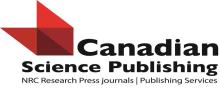Resource information
As part of the development of the 2011 National Land Cover Database (NLCD) tree canopy cover layer, a pilot project was launched to test the use of high-resolution photography coupled with extensive ancillary data to map the distribution of tree canopy cover over four study regions in the conterminous US. Two stochastic modeling techniques, random forests (RF) and stochastic gradient boosting (SGB), are compared. The objectives of this study were first to explore the sensitivity of RF and SGB to choices in tuning parameters and, second, to compare the performance of the two final models by assessing the importance of, and interaction between, predictor variables, the global accuracy metrics derived from an independent test set, as well as the visual quality of the resultant maps of tree canopy cover. The predictive accuracy of RF and SGB was remarkably similar on all four of our pilot regions. In all four study regions, the independent test set mean squared error (MSE) was identical to three decimal places, with the largest difference in Kansas where RF gave an MSE of 0.0113 and SGB gave an MSE of 0.0117. With correlated predictor variables, SGB had a tendency to concentrate variable importance in fewer variables, whereas RF tended to spread importance among more variables. RF is simpler to implement than SGB, as RF has fewer parameters needing tuning and also was less sensitive to these parameters. As stochastic techniques, both RF and SGB introduce a new component of uncertainty: repeated model runs will potentially result in different final predictions. We demonstrate how RF allows the production of a spatially explicit map of this stochastic uncertainty of the final model.



